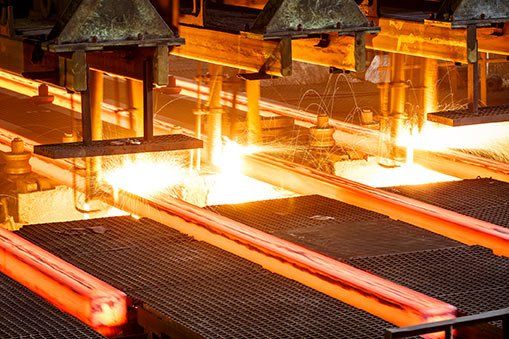The History of Iron and Its Use in Fencing
- By Admin
- •
- 26 Mar, 2018
- •

Iron is a strong metal known for its bold, black look. Iron has been used for millennia and for a variety of purposes, from protecting warships to building beautiful fencing. However, when did humans start extracting iron from the earth and processing it for use? How has iron progressed from being a functional metal to a mostly decorative one? Read on to learn more about the material in this brief history of iron.
1500 BCE: The Hittites Begin Using Iron
Between 3300 and 1200 BCE, most civilizations relied on bronze to make their tools and other metal items. This period was known as the Bronze Age for this reason. Around 1500 BCE, however, the Hittites, a civilization in West Asia, began using iron instead of bronze. They found that it was stronger and better for making weapons.
Purifying iron and making iron items is an intricate process, and the Hittites kept this process a secret for several hundred years.
1200 BCE: The Iron Age Begins and Iron Use Spreads
The Hittites could only keep their iron-making process a secret for so long, and when their empire fell, knowledge of iron spread throughout the world. Thus, the period from 1200 BCE to approximately 500 BCE became known as the Iron Age. During this time, people used iron to make weapons, tools like knives and scissors, and even cooking pots.
The Iron Age played an important role in the advancement of civilizations. Iron weapons were stronger, iron tools were easier to use, and iron pots were easier to cook in than the bronze items people had used previously.
400 CE - 1800 CE: Iron Is Used for Decorative Purposes
By 400 CE, civilizations were more established, and people began spending more time decorating and building permanent, ornate structures. Iron became an important material in many of these designs. People covered doors in iron, not only for protection but also for the way the material looks.
Many Spanish cathedrals feature ornate ironwork, and during the 18th century, the English famously used iron to create detailed gates and railings. The use of iron for decorative gates, railings, and fencing spread from Europe to the U.S. during the 1800s.
1860 CE: Demand for Iron Reaches Its Peak
Demand for iron skyrocketed in the 1860s since, by this time, iron was being used both for functional items and for decoration. Products like stove grates, utensils, and locks were made from wrought iron. It was the primary material used for metal fencing, and for re-enforcing the hulls of warships.
After the 1860s, however, the use of iron for tools and structures began to decline as steel became more popular. Advancements in the steel-making process eventually made steel cheaper and easier to make than iron.
The 1970s - Present Day: Iron Is Mostly Used for Decorative and Restorative Purposes
By 1970, steel was so popular than the need for large-scale ironworking companies practically disappeared. Today, wrought iron is no longer used on a commercial scale. However, it is still used to make decorative fencing, light fixtures, pans, and other small items. Working with iron is a delicate and laborious task, but the result — ornate and durable fencing — is worth the look.
Gone are the days when anyone would want a sword or knife made from iron. However, iron fencing is still very much in style, especially if you have a traditional or historic home and want to preserve its authentic appearance. Capitol City Iron Works offers elegant railings, gates, and fencing in Indiana and the Midwest. Give us a call to learn more about our products.








